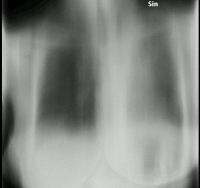
Photo from wikipedia
We read with great interest the recent research letter by Thevissen et al. who reported the findings of their international survey regarding the detection of influenzaassociated pulmonary aspergillosis (IAPA), with… Click to show full abstract
We read with great interest the recent research letter by Thevissen et al. who reported the findings of their international survey regarding the detection of influenzaassociated pulmonary aspergillosis (IAPA), with a focus on the use of galactomannan (GM) in broncho-alveolar lavage (BAL) fluid and serum [1]. They note that greater awareness of IAPA is needed, as are rapid diagnostic tests [1]. We would like to make some comments. Indeed, over the past decades, the patient population having invasive aspergillosis (IA) or IAPA risk factors has expanded significantly, and given that IA/IAPA is associated with high morbidity and mortality, improved diagnostic modalities are required [2]. GM is currently a commonly used method and has a high specificity for IA/IAPA diagnosis, while another test, the (1,3)-beta-Dglucan (BDG) assay, has a high negative predictive value (NPV), making it quite useful to rule out IA/IAPA rather than to confirm it [2, 3]. GM and BDG assays can play an important role in IA/IAPA diagnosis in nonneutropenic patients with underlying respiratory diseases without hematologic malignancy [2]. BDG is the most important and abundant polysaccharide component of the cell wall of most fungi. While incorporated within the fungal cell wall, BDG typically exists as an insoluble structure. In the presence of blood or other body fluids, it transforms into single helix, triple helix (most
Journal Title: Critical Care
Year Published: 2020
Link to full text (if available)
Share on Social Media: Sign Up to like & get
recommendations!